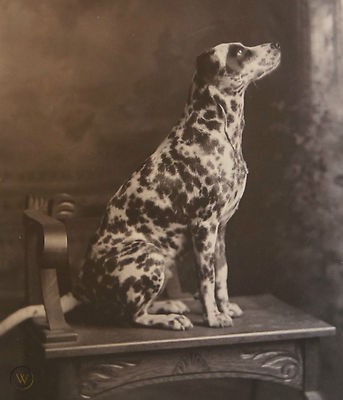
Jack was a bona fide fire dog of Old New York, but the 10-year-old Dalmatian was also called a professional tramp. That’s because in his early days, before he became a hero, Jack was not completely loyal to his official company, Ladder 9 on Elizabeth Street.
Sure, Jack stayed close to his men and the truck at every fire scene, but once the chiefs began releasing companies, he’d choose whichever one packed up and returned to quarters first. In this way, Jack visited about every firehouse in the city.
Though he didn’t have a license, Jack was never at risk walking throughout the city: dog catchers had strict orders from the Bergh Society (Society for the Prevention of Cruelty to Animals) to give him free reign, and they could tell Jack from other Dalmatians because he was “much larger and fatter and also handsomer than the majority of that clan.”
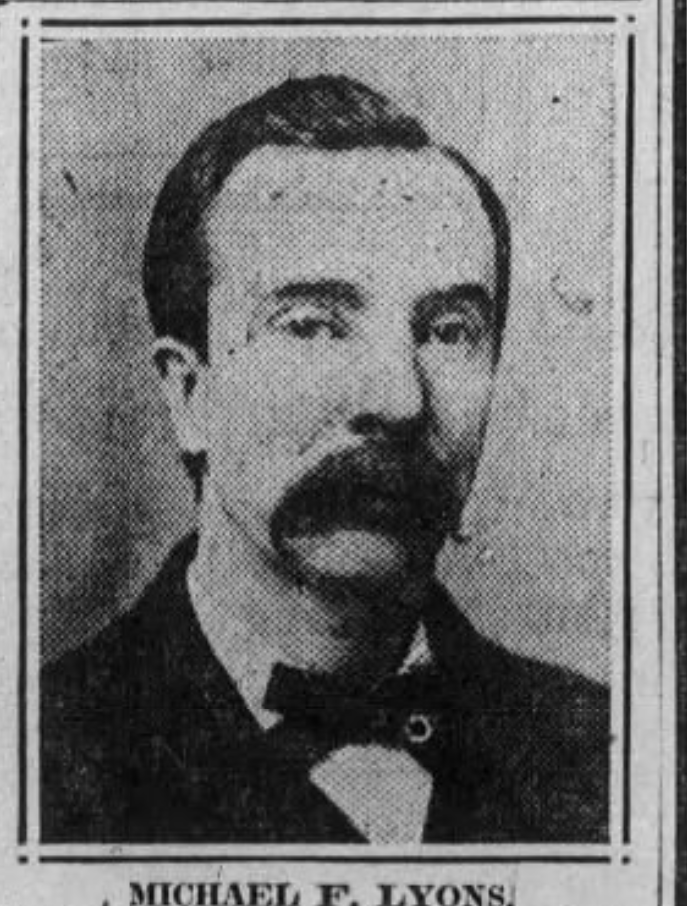
Following these visits, the tramp fire dog would return to the Ladder 9 firehouse at 209 Elizabeth Street “and slink into his home like a culprit.”
Described as a “stocky-built dog with jet black head and saddle,” Jack was not only a tramp, but he was also a big eater, sometimes eating eight times a day at Michael F. Lyons’ restaurant at 259 Bowery. Lyons’ restaurant was a popular rendezvous during the Bowery’s halcyon days, so no doubt Jack came to know many movers and shakers.
One of the most prominent patrons of the restaurant during Jack’s reign at Ladder 9 was Police Commissioner Teddy Roosevelt, who ate most his meals at Lyons’ place while he was carrying a big stick at police headquarters on Mulberry Street (his favorite dish was a slice of roast beef with vegetables, pie, and a mug of ale). Roosevelt loved animals and served as police commissioner from 1895 to 1897, so one can be sure that Jack did some hobnobbing with the future president while they were both dining at Mike Lyons’ place.
Unlike most patrons who had to pay for their meals, Jack dined at Lyons’ restaurant for free as his lifetime award for saving the life of a veteran volunteer fireman. The rescue came during a fire on December 20, 1895, at Military Hall, an old and historic meeting hall, ballroom, and lodging house at 193 Bowery.
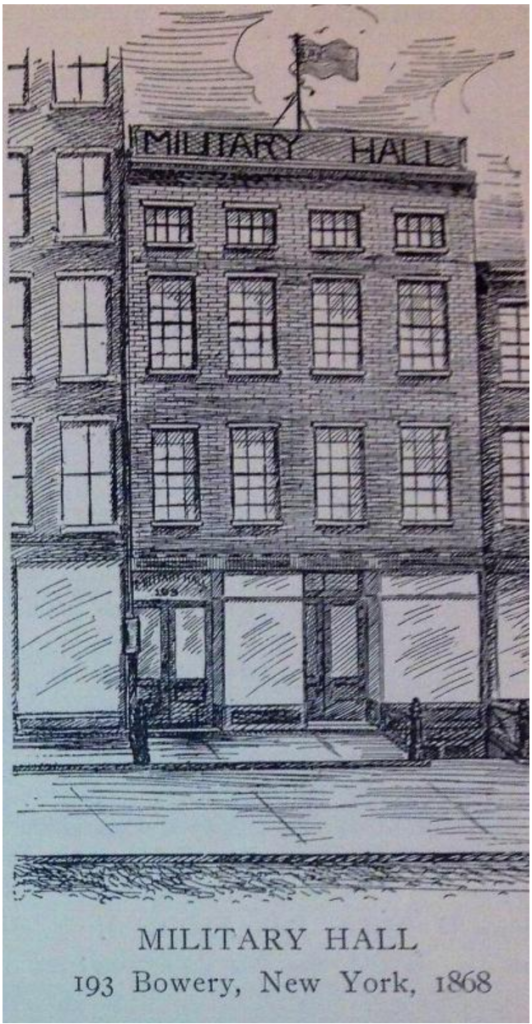
According to the New York World, Policeman Farley of the Eldridge Street police station had discovered the fire in George Groveling’s saloon at 3:15 a.m. When Ladder 9 arrived at the four-story building one minute later, Foreman Charles W. Kruger and Fireman Pat Hanberry could hear shouts coming from the lodging rooms upstairs. They broke through the front door and rushed through the saloon toward the stairs, but the thick black smoke drove them back.
As the janitor of Military Hall and another man came hurrying down the steps, Jack began howling. He headed up the stairs and into a large dance hall. There he found James Hogan—also known as the Bowery Wonder (because everyone wondered what the disabled man did for a living)—asleep on a bench.
Here’s what Hogan, a Civil War veteran and veteran fire laddie, told a reporter about the fire and his rescue:
Right on top of me, snarling and growling, was a big fat dog, rolling me over and over. The room was pitch dark and full of smoke, and I thought I was done for and on the other side of eternity. Just then a flame shot up a few yards away, and it was only then that I was able to take in the situation.
The house was afire, and the dog had been trying his level best to make me understand it. I jumped to my feet, but for the life of me I wouldn’t have known which way to run if it hadn’t been for the pup. He’s a corker, he is. He just took my sleeve between his teeth and began pulling me in the direction of the flames.
I made up my mind that the pup was sent by Providence, and so I followed him right clean through the blaze and the smoke, and he led me safe and sound to the street.”
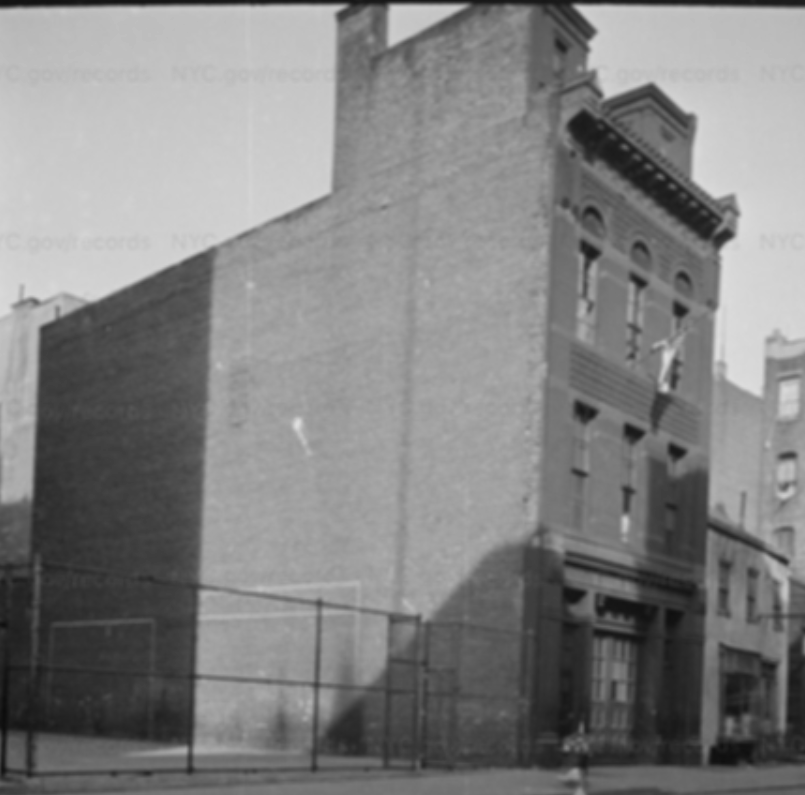
After Jack and Hogan reached the ground floor, the firemen hustled Hogan outside and poured a tub of ale over him to cool him off. When a reporter sought to interview the dog, the men told him to go to Lyons’ restaurant, where he’d find the dog in the kitchen eating “a luxurious dinner.”
Although Jack declined to talk about his good deed, the men of Ladder 9 were more than willing to praise him, believing that the dog was the reincarnation of a dead fire vamp. Lyons rewarded Jack for his lifesaving heroics by giving his employees a standing order to feed the dog at no charge.
From that day on, Jack cut back on his tramping ways so he could stay close to the Bowery and his favorite firehouse and restaurant.

Four years after saving Hogan, on August 17, 1899, Jack met his sudden death at Elizabeth and Prince Streets. One of the new horses attached to the four-ton ladder truck accidentally kicked Jack, sending him rolling on the street. Before he could get up, the wheels of the truck ran over his neck, killing him instantly.
Foreman Green had no choice but to pull his lifeless body onto the truck and continue to the fire. The men told the grieving visitors that they would have his body stuffed and placed in the Ladder 9 firehouse.
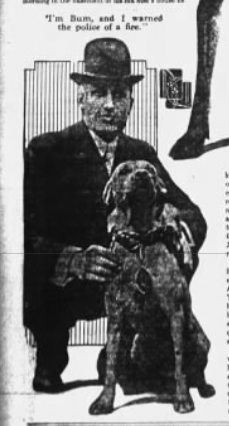
One New Yorker who was especially touched by the death of Jack was Jefferson Seligman, a New York banker whose wealthy family took great interest in the fire department. He was so affected by the firemen’s loss that he presented a new Dalmatian to Ladder 9. The firemen named their new dog Swipes and immediately began training him in the art of four-legged firefighting.
About 10 years after Jack’s reign, another dog named Bum ran with Ladder 9. Bum was actually a police dog attached to the 12th Precinct on Mulberry Street, but he loved nothing more than responding to the big fires with Ladder 9 and Engine 13.
Like Jack, Bum was a lifesaving dog. You can read his full story by clicking here.


